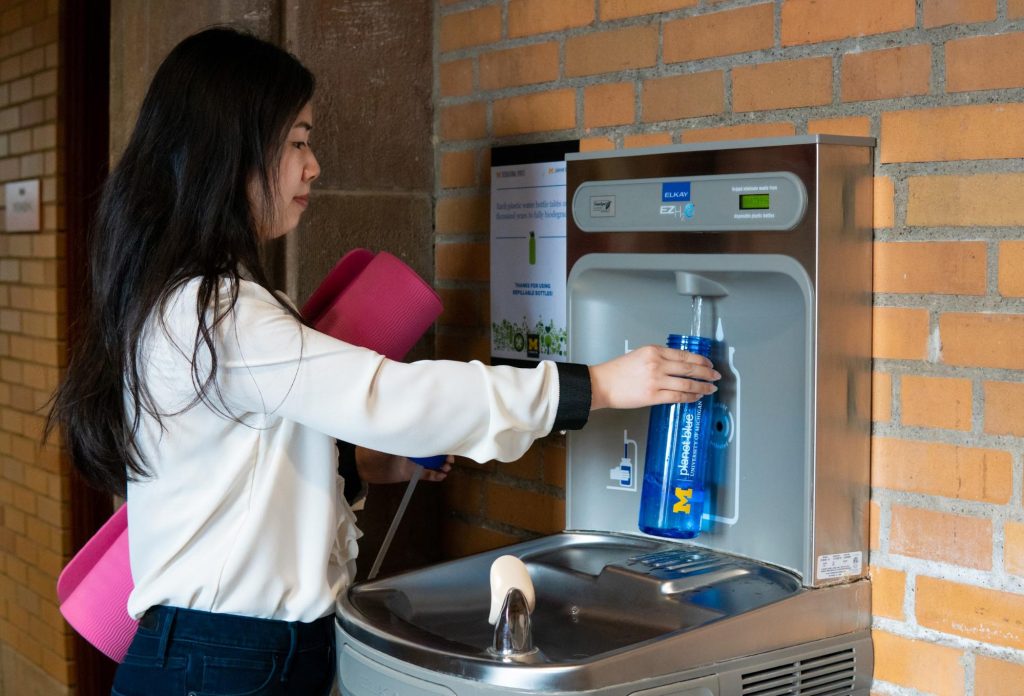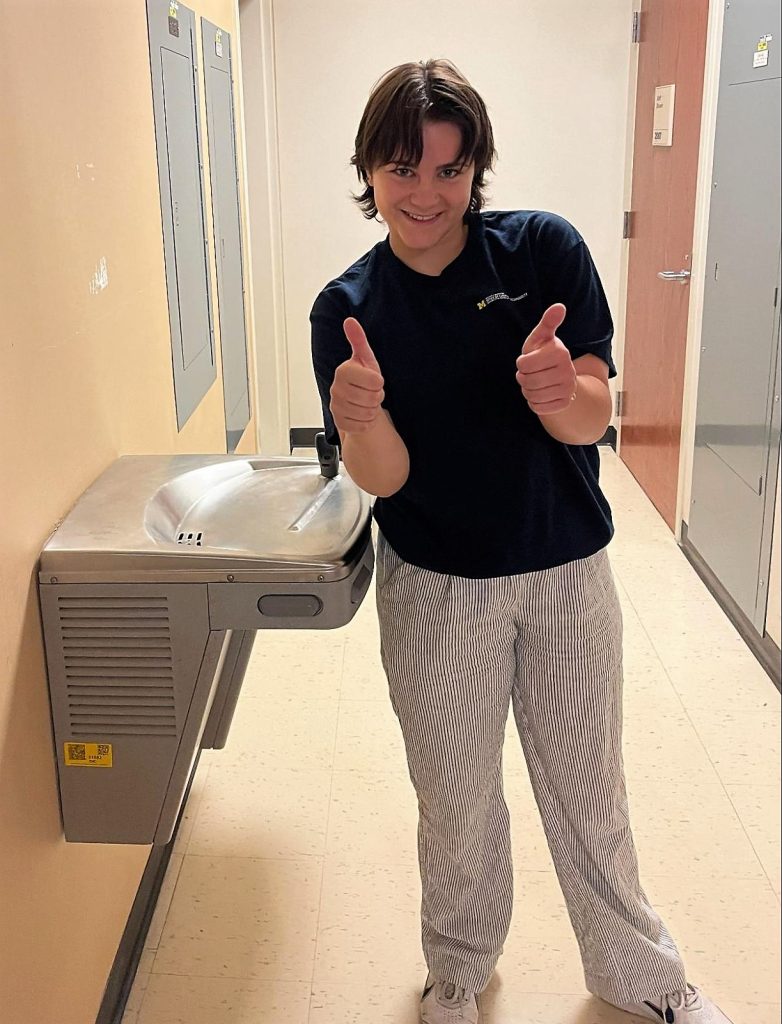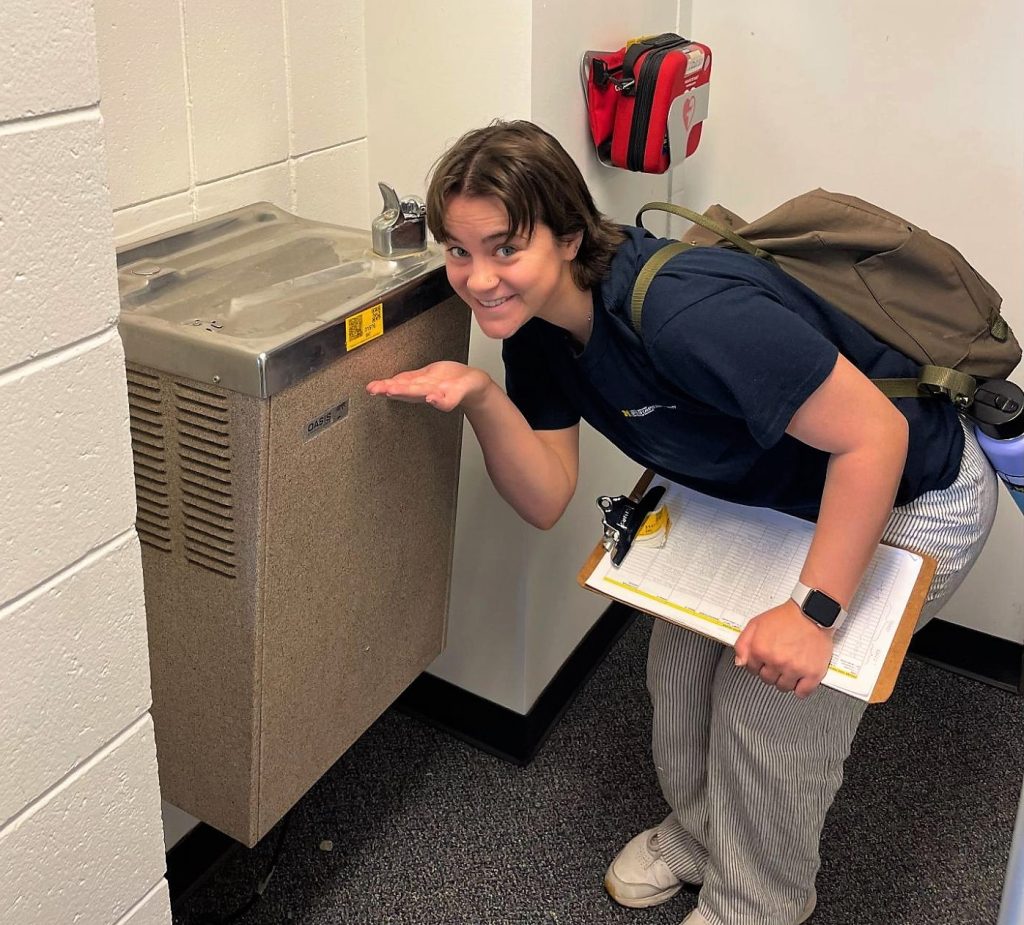U-M has more than 400 water bottle refill stations — but exactly how many? And where? These details have become muddied over the years. Due to the university’s size and decentralized nature, there are many partial or out-of-date inventories.
The Office of Campus Sustainability (OCS) and Maintenance Services have teamed up to build a comprehensive, accurate inventory.
What that means in practice: OCS staff and interns walking every floor of nearly every building to label and record details about water refill stations. It’s a major undertaking!

This project is a response to a noticeable increase in interest from students and leadership to reduce single-use plastic bottle purchases on campus. Student groups and facility managers frequently reach out to OCS requesting information and support to have new refill stations installed. Students have also petitioned the President’s Office to ban single-use plastic bottles on campus.
U-M began replacing water fountains with bottle refill stations on the Ann Arbor campus in 2010 to promote healthy habits and the use of reusable water bottles. The stations proved very popular and encouraged many people to move away from bottled water.
Benefits:
- Avoiding wasted plastic and the pollution and greenhouse gas emissions associated with the manufacture and transportation of single-use plastics.
- Increased accessibility to healthy, free water. Ann Arbor water quality is outstanding, as demonstrated by the thousands of tests taken each year. Additionally, U-M Environment, Health and Safety has proactively undertaken additional water sampling to ensure drinking water quality on campus.
The benefits and interest are clear, so OCS is coordinating a campus-wide assessment of current refill stations and prioritizing potential new station locations.


At midway through the summer, an inventory of general fund buildings is largely complete. Auxiliary units including Student Life and Athletics are working with OCS to ensure access to buildings and staff to assist with the inventorying process. Parallel efforts are starting on the Flint and Dearborn campuses as well.
The data will be used to identify buildings or floors without easily accessible water bottle refill infrastructure. AEC and the Plumbing Shop will help create standards for the placement and maintenance of new stations. Then OCS will use the data and placement standards to prioritize the filling of gaps across the Ann Arbor campus.
While the overall plan is yet to be finalized, this level of collaboration in response to student interest is inspiring and worth celebrating.
U-M leadership is committed to ensuring every building promotes health and sustainability by making it easy torefill water bottles.
Written by Anya Dale

